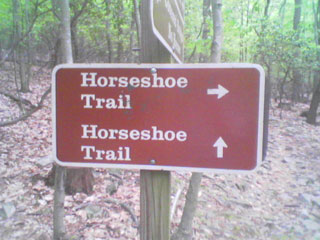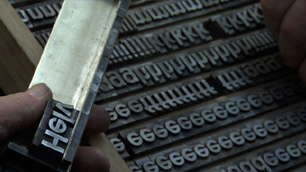Archives
May 25–28, 2007
Memorial Day weekend means only one thing — hitting the road to kick off the summer in an Avalon shore house with my friends.
My sixth season in Avalon will be very different from the previous five. We’re renting a different house on 27th Street, six blocks from our old place and almost directly across the street from the all-important Wawa in town. As a result of the new location, we have more new faces than I can remember, and everyone already seems to be getting along well.
If that’s not enough, our usual nighttime destination, the Princeton, has undergone a huge makeover. The place is much more upscale than its dingy predecessor, but the massive crowds are the same, if not worse.
I’m pleased to report that the weather was clear and very warm all weekend, and the preparations and check-in process went surprisingly smoothly (despite a long line at the local Comcast office to pick up a digital cable TV receiver). And here’s a random photo from the weekend — our neighbors across the street found a creative use for Post-It Notes:

I’m just glad they didn’t decorate my car, which was parked 30 feet away.
[ No. 344 ]
May 24, 2007
I tend to receive a lot of subscription offers to business magazines. That’s not very surprising, since I already receive Business 2.0 and Fast Company. So the publishers of Business Week, Forbes, and Fortune send me tons of inexpensive deals — usually 12 issues for $12 — and try to flatter me by calling each offer an “executive discount.” (When exactly did I become an executive?)
However, one particular offer that arrived earlier this week caught my eye: a dozen issues of Inc. for a whopping $3 (plus $1.95 for shipping) — that’s 92% off the cover price. But wait, that’s not all! That meager sum of $4.95 also gets you a separate Business Owner’s Guide to Success handbook and a “presidential” pen-and-pencil set. Seriously, how are they not losing money on this?
I’m tempted to sign up and ask them for a payment plan.
[ No. 343 ]
May 23, 2007
On Monday night, upon opening the envelope containing the new hunter green Onion baseball cap that I had ordered, I was pleasantly surprised to discover that the package included a pair of Floyd Landis–inspired yellow bracelets at no charge:

So, forget all about Lance Armstrong’s earnest LIVESTRONG campaign. Instead, simply CHEAT TO WIN.
(Strangely, while Googling this topic, I stumbled upon Cheat to Win, an entire site that’s run by a self-described “business contrarian and maverick” who sells a suspiciously similar-looking wristband. Which one came first?)
[ No. 342 ]
Photo credit: The Onion store
May 19, 2007
I spent part of the afternoon in nearby Valley Forge Park, exploring trails on the ominous-sounding Mount Misery for the first time. The journey was far from easy; the trails were very rocky in some areas, and a number of the hills along the way were challenging. But the 2½-mile walk was breathtakingly beautiful, and I’m looking forward to going back there again soon.
Even though I took a few minutes to study a posted trail map at the entrance to the Mount Misery trail, I must admit that I was very confused by this sign at an intersection in the woods:

Fortunately, I guessed correctly by turning right; I later learned that heading straight would have led me out of Valley Forge Park and onto private land. But maybe I’ll bring a hard copy of the trail map next time, just to be safe.
[ No. 341 ]
May 15, 2007
After work, I took the train from nearby Conshohocken into the city to attend the Philadelphia premiere of Helvetica, arguably the first documentary film in recorded history about a typeface.

Most sane people don’t even know what Helvetica is, and those who do probably can’t imagine watching an 80-minute movie about a font, of all things.
But Helvetica has played an important role in modern graphic design. It was created in 1957 by Swiss designers who wished to craft a highly legible, Modernist style of lettering. I’m sure they couldn’t have imagined that their creation, which evolved into the Helvetica family, would eventually become the most ubiquitous typeface in the world.
The screening of Helvetica that I attended was held in a surprisingly crowded Edmumd D. Bossone Auditorium at the Westphal College of Media Arts & Design at Drexel University. The film, directed by Gary Hustwit (who also co-produced the Wilco documentary I Am Trying to Break Your Heart), celebrates Helvetica’s 50th birthday with enthusiastic commentary from some of the most admired graphic designers in the world.
The film was pleasantly even-handed; not every designer who appeared in Helvetica spoke highly of its namesake. In fact, some derided the typeface as boring and an overused “default.” One even felt that Helvetica symbolized corporations, oppression, and the Vietnam War–era U.S. government (which struck me as absurd; have we reached the point where fonts are political?).
But like it or not, the impact of Helvetica is undeniable, and the film captured an amazing number of examples of its applications worldwide. You see it everywhere, from airplanes (American Airlines, Lufthansa) to automobiles (BMW, Jeep, Toyota) to retail stores (Crate & Barrel, JC Penney, Sears, Staples, Target, Urban Outfitters). Helvetica appears on cable stations (Court TV, TNT), electronics (Panasonic, Kawasaki), Nestlé candy bars, Energizer batteries, Fendi handbags, New York City subway signs and maps, and even IRS tax forms.
That’s quite a résumé for a font, if you ask me.
After the film, Hustwit answered many spirited questions from the audience of about 300. He explained that his documentary was mostly self-financed, since “it’s hard to pitch a film that’s about a font.” Hustwit cleverly noted that, on the exterior of the very building in which we were sitting, the signs were coincidentally set in Helvetica, and joked that he absolutely will not direct a follow-up documentary about Times New Roman.
Even as I made my way home, I couldn’t escape Helvetica’s presence — it appeared on a Drexel building next door to the auditorium, above a modern-day entrance to 30th Street Station, within the Amtrak logo, and on SEPTA Regional Rail signs at each train station along the ride home. As one designer remarked in the film, Helvetica is like air or gravity — it’s simply everywhere. But given the amount of poor design out there, maybe that’s not such a bad thing.
[ No. 340 ]
May 12, 2007
A few weeks ago, I was discussing the evergreen corporate topic of teamwork with a colleague of mine. She had emigrated to the U.S. from Germany about 10 years ago, and mentioned that there’s a German word that captures the concept of camaraderie quite well. But when she pronounced the term in her native tongue, I refused to believe that it was only a single word.
Here is the word in all of its glory:
Gruppenzusammengehörigkeitsgefühl
Loosely translated, it means “group togetherness feeling.” If you’re keeping score at home, the word contains 33 letters and 11 syllables. And surprisingly, even before I posted this entry online, I ran a quick Google search on the word (umlauts and all) and found no fewer than 168 results.
As I asked my coworker: do Germans use hyphens once in a while?
[ No. 339 ]
May 9, 2007
As someone who has worked at Walt Disney World, I can tell you that the culture was pretty overwhelming there. We had our own vernacular — customers were always called Guests (with a capital G); my fellow employees and I were dubbed Cast Members; and we weren’t merely “at work,” but “on stage.” Pointing at a distant object required two fingers, since using just one can come across as rude. And our outward appearance — everything from hairstyle to jewelry — was strictly controlled and enforced.
There are entire organized religions that have fewer expectations of its followers, and I find it hard to argue with people who feel that the whole Disney phenomenon resembles a cult of sorts.
But despite the substantial influence of Uncle Walt over the years, I could never have predicted that Mickey Mouse could actually be hijacked in the name of radical Islam:
A giant black-and-white rodent named “Farfour,” or “butterfly,” but unmistakably a rip-off of the Disney character does his high-pitched preaching against the U.S. and Israel on a children’s show each Friday on Al-Aqsa TV, a station run by Hamas. The militant group, sworn to Israel’s destruction, shares power in the Palestinian government.
And here’s a still photo of Mohammed al-Mouse, preaching to all the boys and girls who wish upon a star and dream of jihad:

The day after the original story broke, Hamas militants pulled the plug on the show, apparently because Mickey’s evil twin was a “mistaken approach” to the Palestinian cause.
Look, you zealots can hate us all you want, but get your own mascot, OK?
[ No. 338 ]
Photo credit: ABC News / AP
May 3, 2007
On a midweek vacation day, I joined my friend and former coworker Andy in attending a luncheon featuring John C. Bogle, founder of the Vanguard Group. The event was the latest installment in Philly radio talk-show host Michael Smerconish’s popular Book Club series, and was held in Center City at the stately Union League (or as Andy now likes to call it, the “Justice League”).
Jack Bogle, who was still chairman at Vanguard when I worked there years ago, is one of my personal heroes. A certified legend in the financial world, Bogle essentially pioneered the concept of index funds, has consistently advocated a low-cost, “stay the course” approach to investing, and above all, has promoted his ideas and managed his business with integrity, wisdom, and humility.
The event featured an in-depth Q&A session between Smerconish and Bogle, who was promoting his latest book, The Little Book of Common Sense Investing. To my astonishment, Bogle mentioned that he wrote the majority of the book in just 12 days while “vacationing” in Lake Placid, N.Y.
While discussing the benefits of long-term investing, Bogle provided the humorous advice, “Don’t just do something; stand there.” (Let that sink in for a minute.) He also spoke at length about his contemporary Warren Buffett, who recently proposed a new Law of Motion in addition to Isaac Newton’s discoveries: “Returns decrease as motion increases.” In other words, if you want to avoid wasting money on brokerage commissions and capital gains taxes, stop buying and selling all the time. Buy and hold — it’s that simple.
Toward the end of the luncheon, my friend Andy submitted a written question to Bogle, asking him to sing “Amazing Grace,” which Bogle had done at a Vanguard employee’s service anniversary in the past. To everyone’s delight, Bogle actually honored Andy’s request and sang the entire first verse of the old spiritual in a booming baritone.
After I had my copy of the book signed by Bogle after the event, Andy and I walked about 10 blocks to the National Constitution Center (for which Bogle previously served as chairman and helped to establish) and spent the remainder of the afternoon taking a tour of the beautiful facility.
Normally, a vacation day spent wearing a jacket and tie wouldn’t be much fun, but this day in the city was definitely well spent.
[ No. 337 ]
